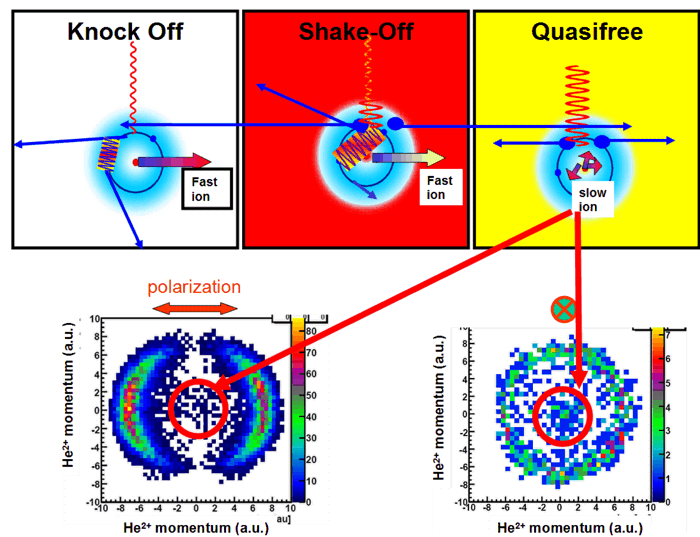Experimental proof of a quasifree mechanism for single photon double ionization
|
A single photon can lead to double ionization by two processes termed knock-off and shake off. In both cases the photon couples to one electron and
the second electron is ejected via electron-electron interaction either before or after the photon absorption (see our experiment).
In 1975 Amusia et al [J. Phys. B 8, 1248 (1975)]. predicted that at very high photon energies a third so called quasifree double ionization mechanism should
come into play. Its characteristic fingerprint is the ejection of two electrons back to back with similar energy while the nucleus is only a spectator remaining
almost at rest. this mechanism ejects electrons mainly from the part of the initial state wave function at the electron-electron cusp, i.e., where both electrons
are spatially close together. It is a contribution to the quadrupole part of PDI since emitting electrons back to back with equal energies is forbidden by the
kinematic selection rule in a dipole transition. This region of momentum space is, however, allowed in a quadrupole transition. 
Publication: Collaboration:
Data from COLTRIMS Collaboration at ALS |
